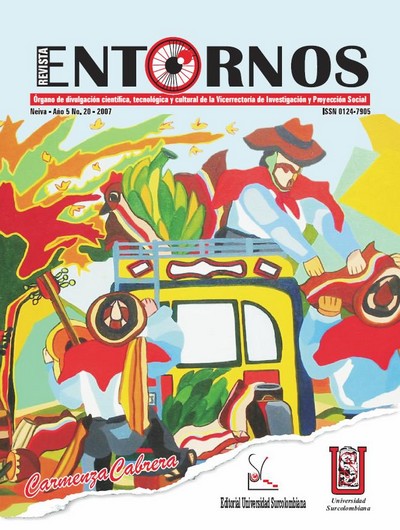Utilización de herramientas computacionales en el proceso de enseñanza – aprendizaje
##plugins.themes.bootstrap3.article.main##
La nueva era de la información y la comunicación ha incidido notablemente en los ambientes rutinarios de aprendizaje, provocando cambios significativos en ellos. El nuevo milenio demanda habilidades o competencias en el manejo de la información, por ese motivo los procesos de adquirir, seleccionar y utilizar la información así como la creación de nuevos conocimientos, requieren el uso de herramientas que permitan energizar el proceso de enseñanza-aprendizaje. Una vía para lograr un conocimiento efectivo es buscar métodos y medios que permitan a los estudiantes adquirir el aprendizaje significativo, incorporando nuevas ideas de forma coherente a los conocimientos que ya posee el alumno construir su propia estructura de conocimiento, o estructura cognitiva, a través de esfuerzos propios; rechazando el aprendizaje memorístico o por repetición que el alumno adquiere desde algunos contenidos relacionados arbitrariamente entre sí, sin ninguna significación, el cual debe circunscribirse a situaciones muy específicas y bien fundamentadas. Con la meta fundamental de fomentar el aprendizaje significativo, se requiere disponer de un material correctamente estructurado y con un significado lógico, es decir, adecuado a las estructuras cognoscitivas del alumno, con contenidos organizados y no simplemente yuxtapuestos, siendo necesario que el alumno haya adquirido previamente ideas o conceptos con los que pueda relacionar los nuevos, es ahí donde surgen las herramientas computacionales, efectivas para reafirmar, construir y profundizar el conocimiento. Las herramientas computacionales han mostrado su efectividad como herramienta auxiliar de aprendizaje. Su uso permite: resumir lo aprendido, tomar notas, formar plataformas para el entendimiento, consolidar experiencias educativas, mejorar condiciones efectivas para el aprendizaje, enseñar pensamiento crítico, apoyar la cooperación, colaboración y organizar contenido. Aunque no basta con aplicar nuevas herramientas, tecnologías para mejorar el proceso docente- educativo, no caben dudas de que un uso bien adecuado de ellas, ajustadas a las características de lo que se enseña y donde se enseña, incide positivamente en la calidad del aprendizaje.
Summary
The new era of the information and the communication has impacted notably in the routine atmospheres of learning, causing significant changes in them. The new millennium it demands abilities or competitions in the handling of the information, for that reason the processes of acquiring, to select and to use the information as well as the creation of new knowledge, they require the use of tools that you/they allow to energize the teaching-learning process. A road to achieve an effective knowledge is to look for methods and means that allow the students to acquire the significant learning, incorporating new ideas in a coherent way to the knowledge that the student already possesses to build his own structure of knowledge, or cognitive structure, through own efforts; rejecting the learning memorístico or for repetition that the student acquires arbitrarily to each other from some related contents, without any significance, which should be bounded to very specific and well based situations. With the fundamental goal of fomenting the significant learning, he/she requires to have a correctly structured material and with a logical meaning, that is to say, appropriate to the student's cognitive tructures, with organized and not simply juxtaposed contents, being necessary that the student has acquired ideas or concepts previously with those that can relate the new ones, it is there where the computational tools arise, effective to reaffirm, to build and to deepen the knowledge. The computational tools have shown their effectiveness like auxiliary tool of learning. Their use allows: to summarize that learned, to take notes, to form platforms for the understanding, to consolidate educational experiences, to improve effective conditions for the learning, to teach critical thought, to support the cooperation, collaboration and to organize content. Although it is not enough with applying new tools, technologies to improve the educational-educational process, don't fit doubts that a very appropriate use of them, adjusted to the characteristics of what becomes trained and where he/she becomes trained, it impacts positively in the quality of the learning
Descargas
##plugins.themes.bootstrap3.article.details##
[AUS97] “Sicología Educativa. Un punto de vista cognoscitivo”; Ausubel, David P.; Novak, J. D.; Hanesian, H. Editorial Trillas, Décima reimpresión, México, 1997.
[DIA97] “Estrategias docentes para un aprendizaje significativo. Una interpretación constructivista”. Díaz Barriga, F.; Fernández, G. Editorial Mc Graw Hill, México, 1997.
[FEL88] “Learning and Teaching Styles in Engineering Education”, Felder, R.M. y L.K. Silverman. Engineering Education, 78, 674-681 (1988).
[FUE99] “Metodología de Integración de las Nuevas Tecnologías de la Información y la Comunicación en la Enseñanza y el Aprendizaje de las Matemáticas de las Carreras de Ciencias Técnicas”. Fuentes, E. R. (1999) Tesis de Doctorado. UCLV. Cuba.
[GON94] “Didáctica Universitaria” González, O.; CEPES, Universidad de la Habana, La Habana, 1994.
[LOP93] “Sistemas Tutoriales Inteligentes (ITS)”. López Ostio J. Conferencia mecanografiada. San Sebastián, España: 1993.
[NUÑ94] ”Problemas Sociales de la Ciencia y la Tecnología”. Nuñez, J. y Pimentel , L. GESOCYT. Editorial Felix Várela. La Habana. Cuba. 1.994.
[O'FA92] “El desarrollo de la informática en la Educación Médica Superior”. O'Farrill E, Colonga C. Revista Educación Médica Superior 1992;(2):122-36.
[SLE82] “Intelligent tutoring systems”. Sleeman D, Brown JS. London: Academic, 1982.
[SPI87] “Megatrennds in educational technology”. Spitzen DR Educ Technol 1987;27(9):44-7.
[TUR05] “Research on Engineering Student Knowing: Trends and Opportunities” Turns J., C. Atman, R. Adams y T. Barker. Journal of Engineering Education, 94(1), 27-40 (2005).








